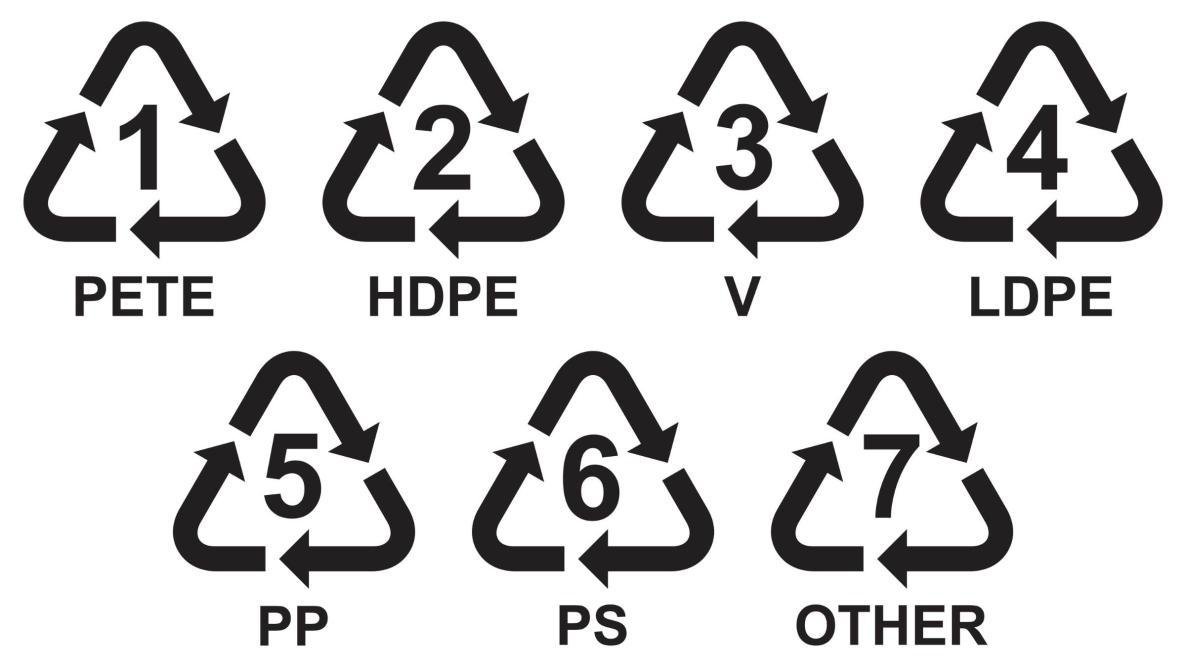The Unspoken Truth: Recycling
Think this chasing arrow symbol means you can toss a product in the recycling bin?
Wrong. But, that's what we thought too--until we learned that this symbol is deceptive and only 4-5% of plastic goes back into circulation each yearg-rate-drops-close-5-report-2022-05-04/ in the United States. Most plastic packaging doesn't make it through recycling facilities because of color, small size, or material type.
So, here’s our plastic recycling cheat sheet and tips for a more sustainable future.
The Myth of the Chasing Arrow
Not all products bearing the chasing arrow symbol are recyclable. In fact, this symbol is so misleading that California recently made it illegal to place the chasing arrow symbol on non-recyclable products. Unfortunately, use of this symbol isn't regulated everywhere. For now, we still need to decode its meaning by looking at the number in the center of the chasing arrow.
The number in the center indicates what type of plastic the container is. For example number 1 is polyethylene terephthalate ("PET" for short). Although plastics 1, 2, and 5 are largely recyclable, category 3, 4, and 6 are not generally accepted by curbside recycling programs. That means flexible products like plastic bags, bubble wrap, and food wrappers cannot be recycled even if they bear a chasing arrow symbol.
Perhaps most confusing is category 7, which is just a hodgepodge of all "other" uncommon plastics. Nope, these can't be recycled either.
Even if we throw everything in the blue recycling bin, these unrecyclable varieties end up in the landfill and pollute our environment--taking hundreds of years to decompose into harmful microplastics.
Play this fun quiz by the New York Times to see how well you can sort garbage into recycling versus trash.
At Least Type 1, 2, and 5 Plastic Are Always Recycled, Right?
Nope! Even products made out of recyclable plastics (PET, HDPE, or PP) may be the wrong size or color to make it through a recycling facility. Small items (such as bottle caps and cutlery) fall through the cracks on recycling lines, and darker colors (like black takeout containers) are difficult for optical scanners to detect. Sometimes, a recyclable item can even cause problems if it isn't clean and still contains food or cosmetic residue; this can contaminate the rest of the recycling batch and render it all trash. All of these variables mean that less than 30% of type 1 and 2 plastics actually end up recycled.
As a cherry on top, even successfully recycled material isn't always utilized. For example, there may not be enough buyers to purchase recycled plastic pellets. Furthermore, when manufacturers use recycled plastics to make new containers they often need to mix in more "virgin" (new, unused) plastic to ensure structural integrity and the correct colors. These mixed containers are often then unrecyclable since they already contain recycled materials, and these end up in the landfill because plastic can only be recycled a handful of times before losing its quality.
How Do I Decide What to Recycle?
It's difficult to navigate these convoluted rules, but we have some tips to maximize sustainability:
Empty and rinse your recyclables before tossing them in the blue bin
Choose recyclable plastics when possible (type 1, 2, or 5)
Avoid throwing unrecyclables (such as plastic bags) into the recycling stream as these can tangle on equipment
Avoid plastic when possible by opting for brands that use alternative packaging materials (e.g. compostable packaging, glass, aluminum, or paper)
We cannot recycle our way out of the plastic pollution crisis, but we can do our part to minimize waste in the meantime and choose to support brands that minimize packaging and avoid using conventional plastics.

